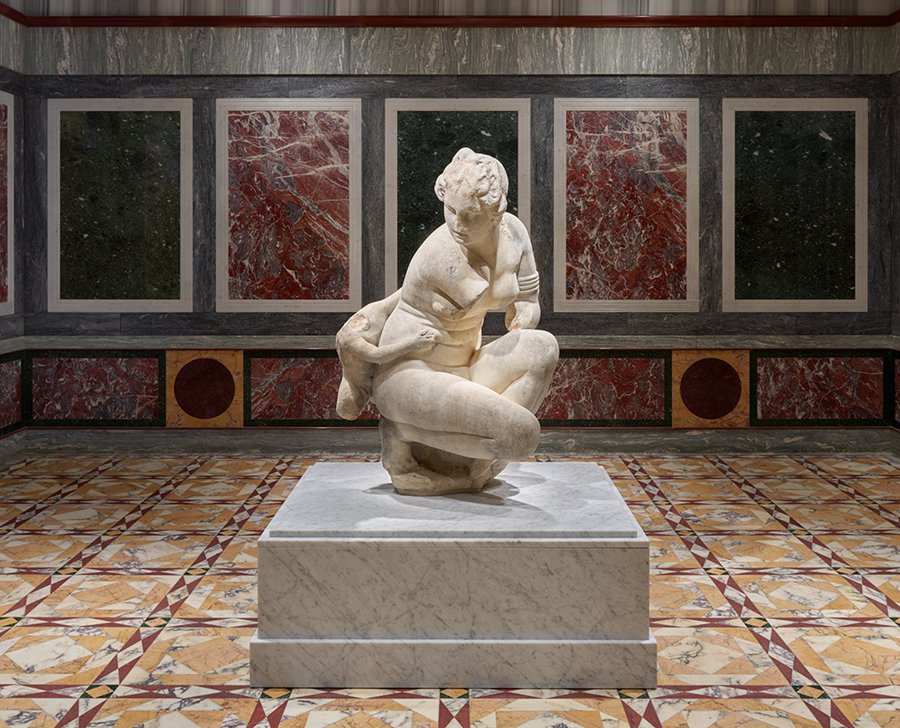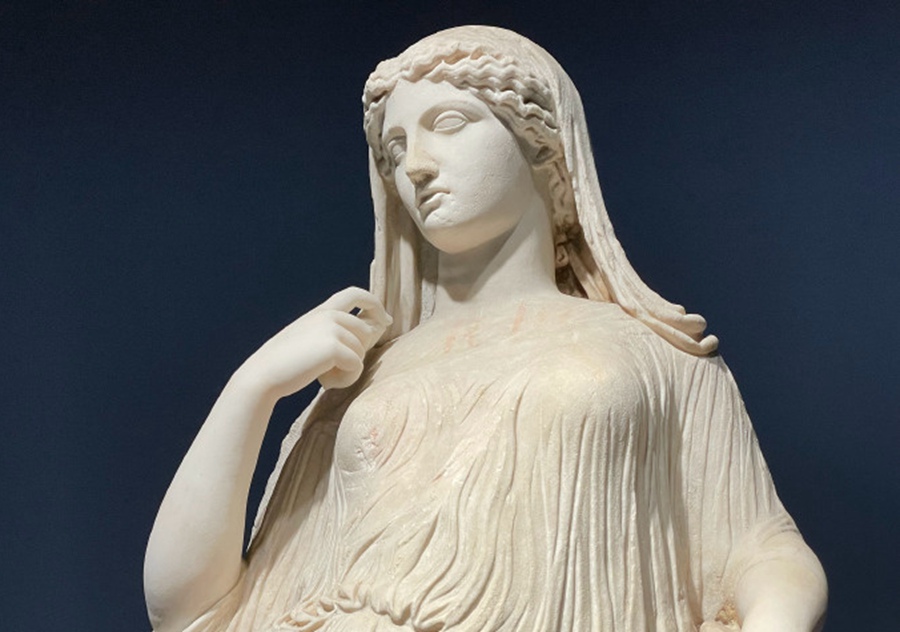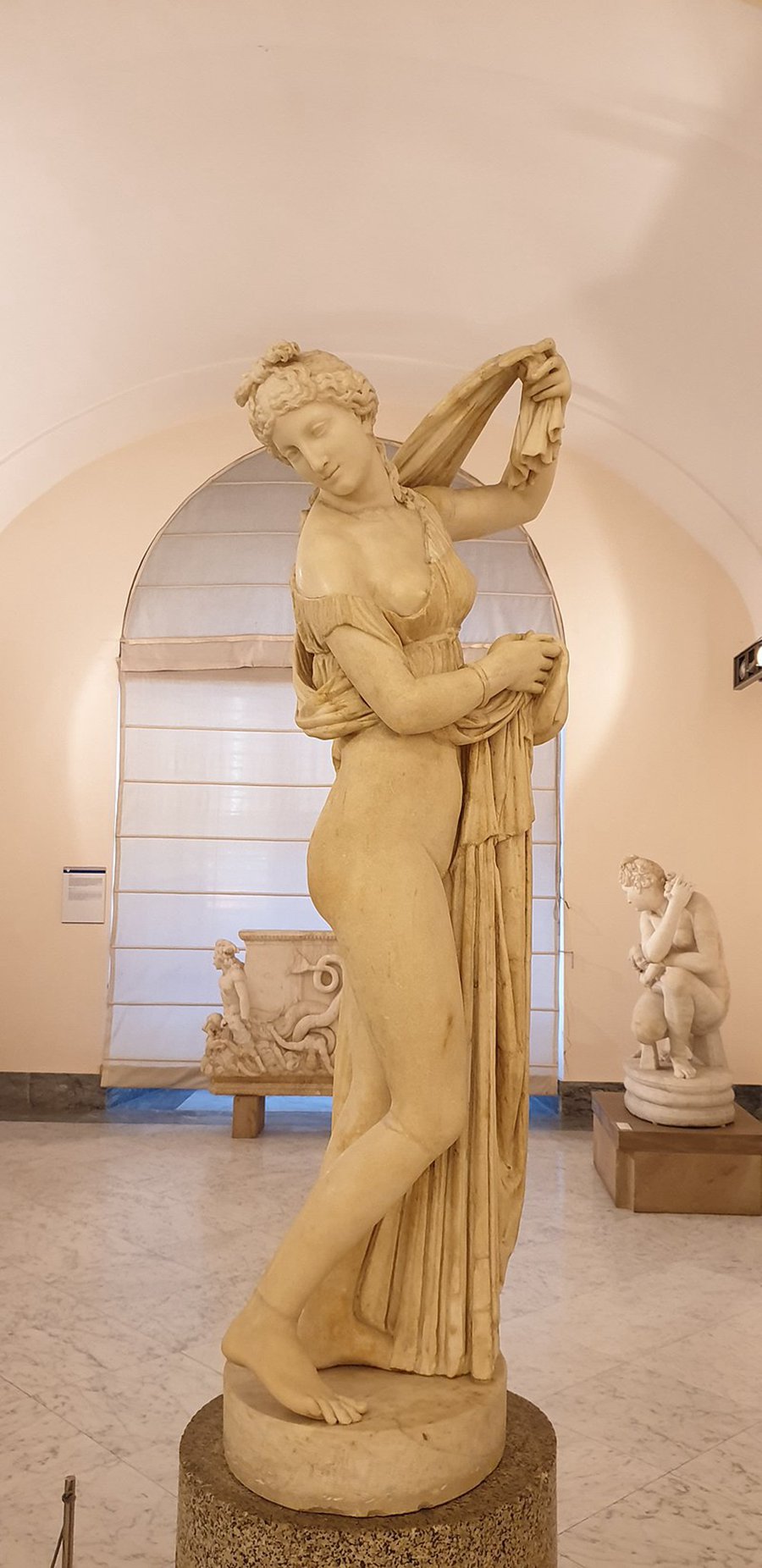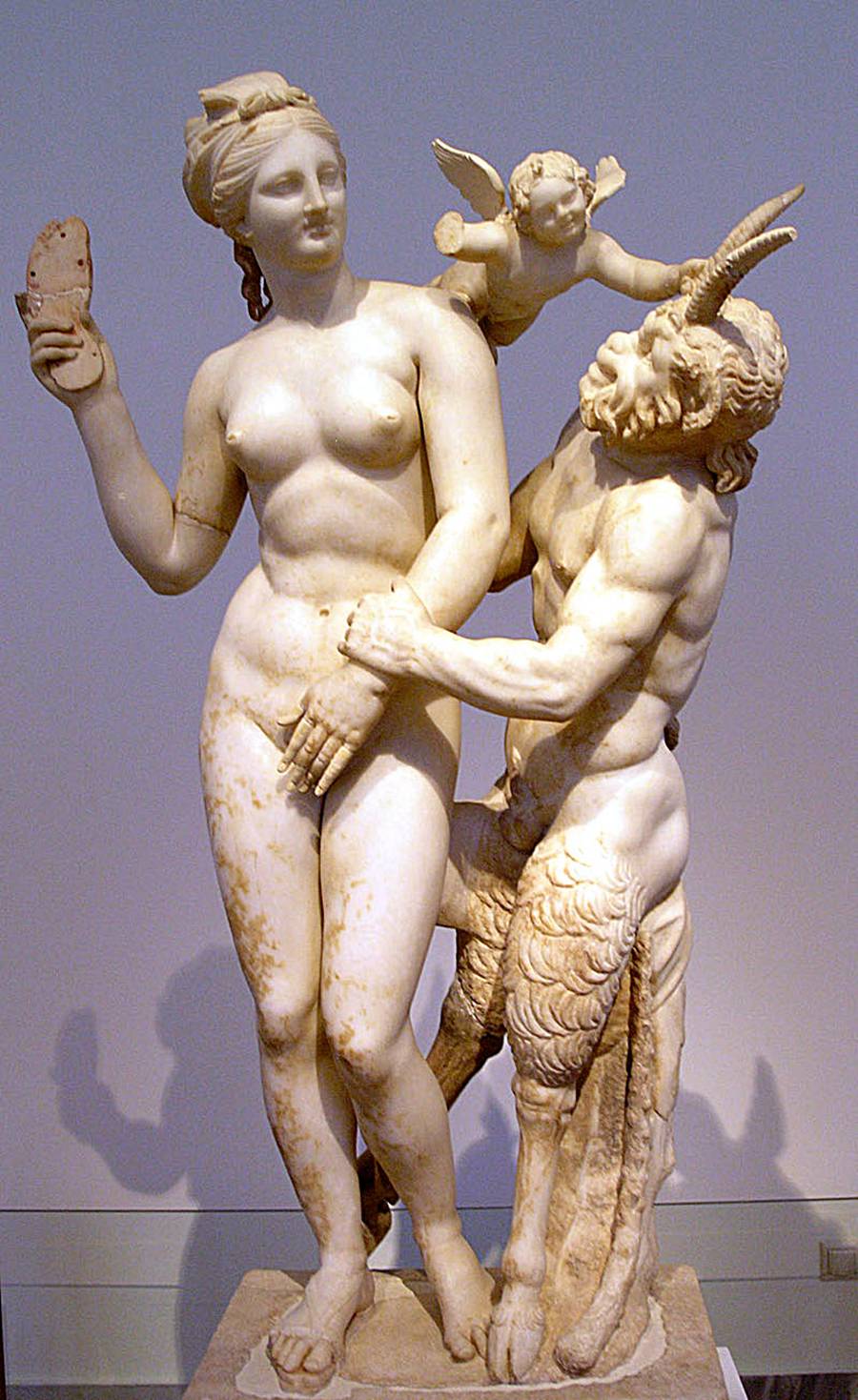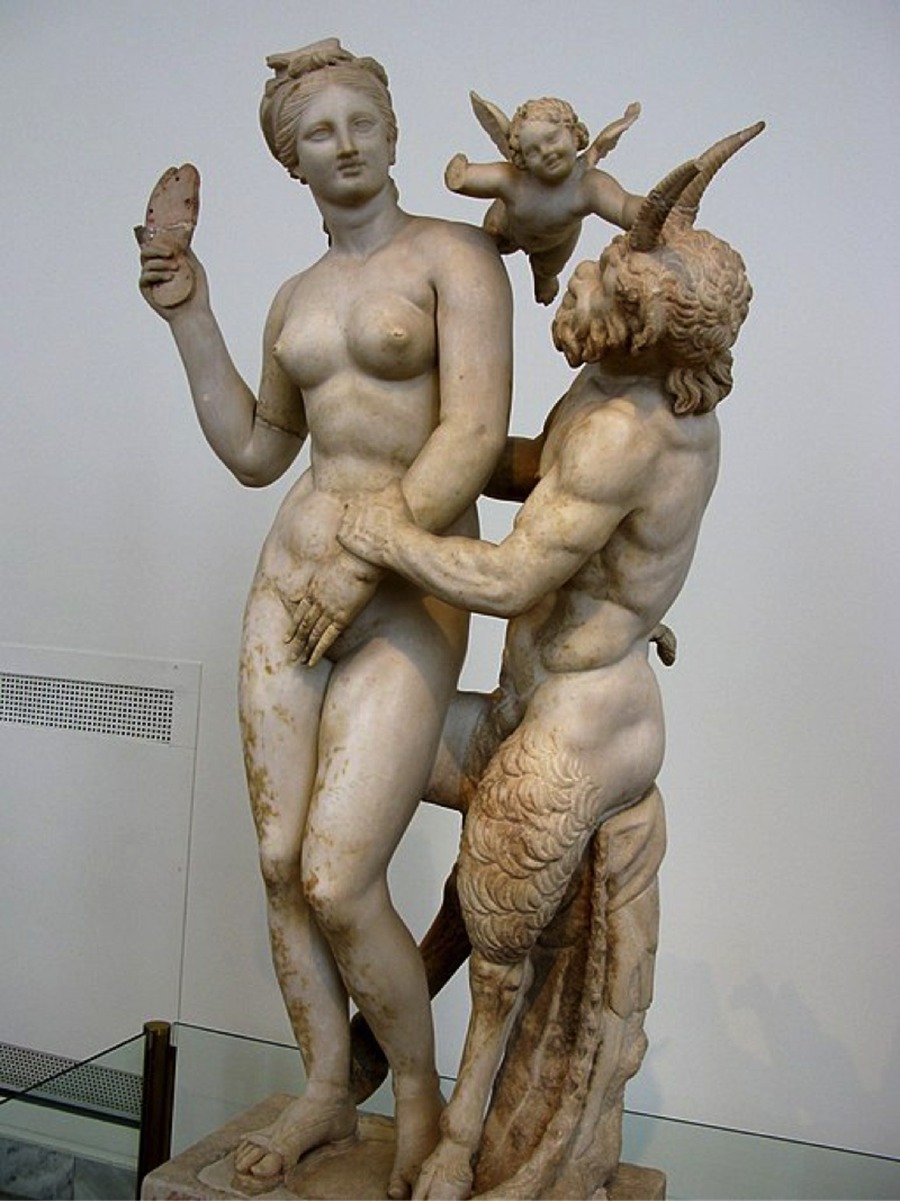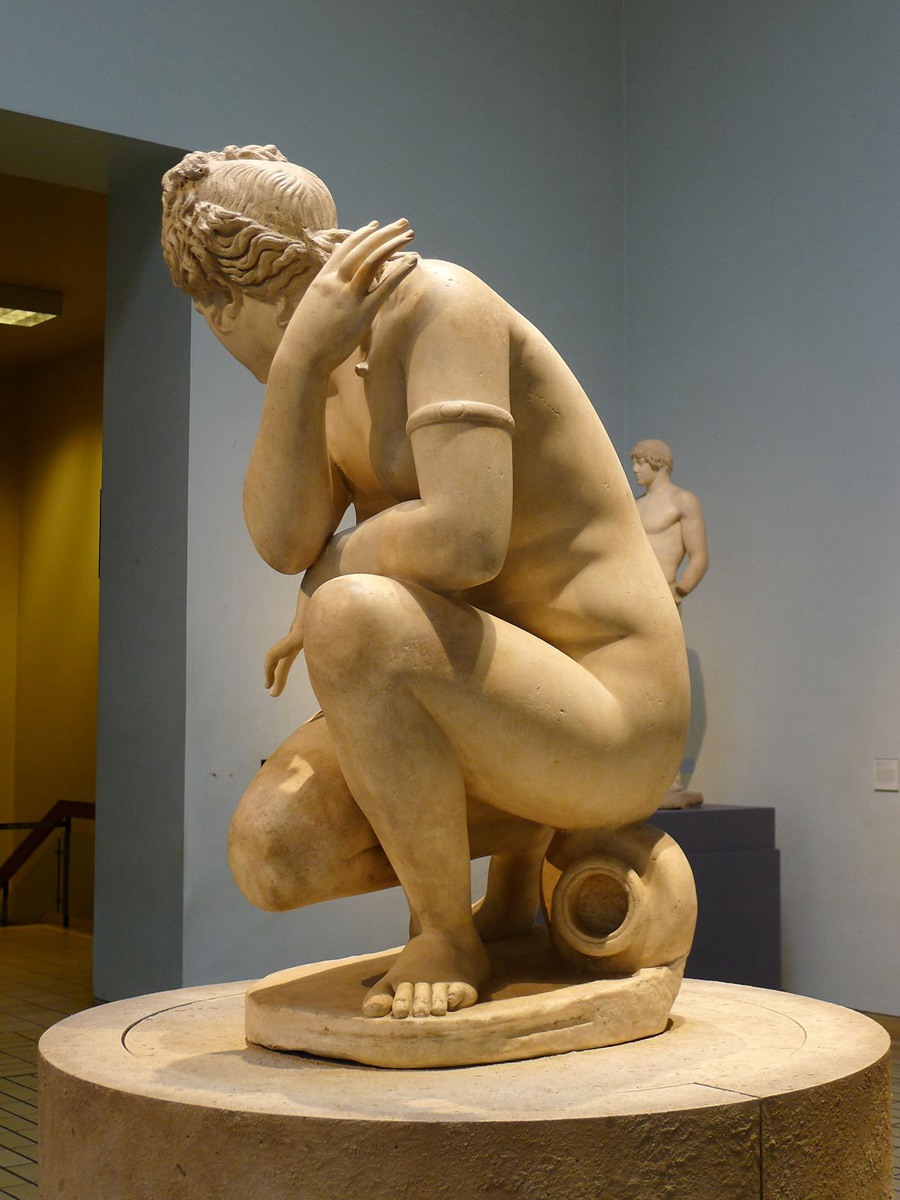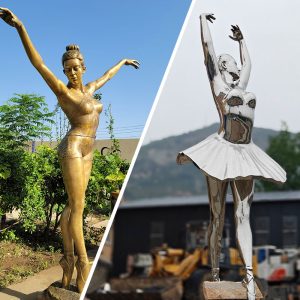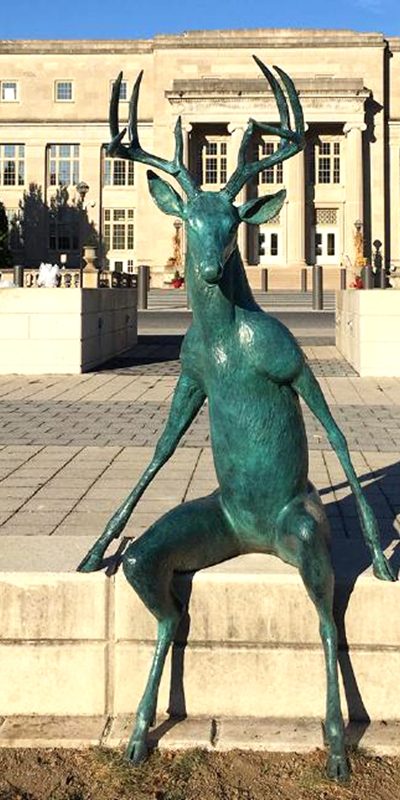The Venus de Milo is a classic and famous marble statue. Do you know the story behind Venus? From ancient times to the present, many artists have used Aphrodite as the theme to carve and create many classic statues. Today, I will introduce you to 9 famous marble Venus statues and the stories they tell.
Who is Venus or Aphrodite?
Aphrodite is a mythical character in Greek mythology. Latin characters such as “Venus” and “Friday” are derived from her Roman name. She is the goddess representing love, beauty and sex, in charge of human love and the growth and reproduction of all animals. Venus has the most perfect figure and appearance in ancient Greece. She is considered to be the representative of the most beautiful goddess. She received the golden apple that symbolizes the most beautiful goddess, so all the gods love her and pursue her.
There are three theories about her birth. The first one is that she was born to the main god Zeus and the ice sea goddess Dione; the second one is that after Cronus castrated his father, the god Uranus, he threw his genitals upward. It fell out and fell into the Aegean Sea; there is also a saying that after the god Uranus was castrated by Cronus, his blood dripped into the sea, thus giving birth to Aphrodite. “Aphrodite” means “born from the foam of sea water”.
Related meanings of Venus
Aphrodite was originally one of the harvest goddesses, myrtle was her sacred tree, and her sacrifices were sparrows, doves, and rabbits. After the formation of Olympus, she was regarded as the goddess of love, sexual desire and beauty.
Perhaps because of the legend that Venus was born in the sea, she is sometimes regarded as the patron goddess of navigation. Some people have always regarded her as a god who ensures safe navigation. Another legend says that she was born at sea and particularly loved swimming in the sea. Where she often swam was at Polislin Beach. This beach is known as the “Bath of Cupid”. When visitors come here, they all pick up a handful of the clear spring and take a few sips, hoping that they will walk on the smooth road of love and everything will go well.
9 Famous Marble Venus Statues
1.Venus Callipyge, 300 BC
Venus Callipyge statue depicts the goddess Venus lifting her robe before bathing. Looking around the work, Venus’s head-turning posture reflects the natural beauty of her body shape. The contrast between the lines of her robe and the curves of her body shows a balance. She seems to be admiring her reflection in the water, and implicitly expresses her satisfaction with this beauty. This sculpture embodies the unique vision of the sculptor Praxiteles, looking at the relationship between humans and nature from a new perspective.
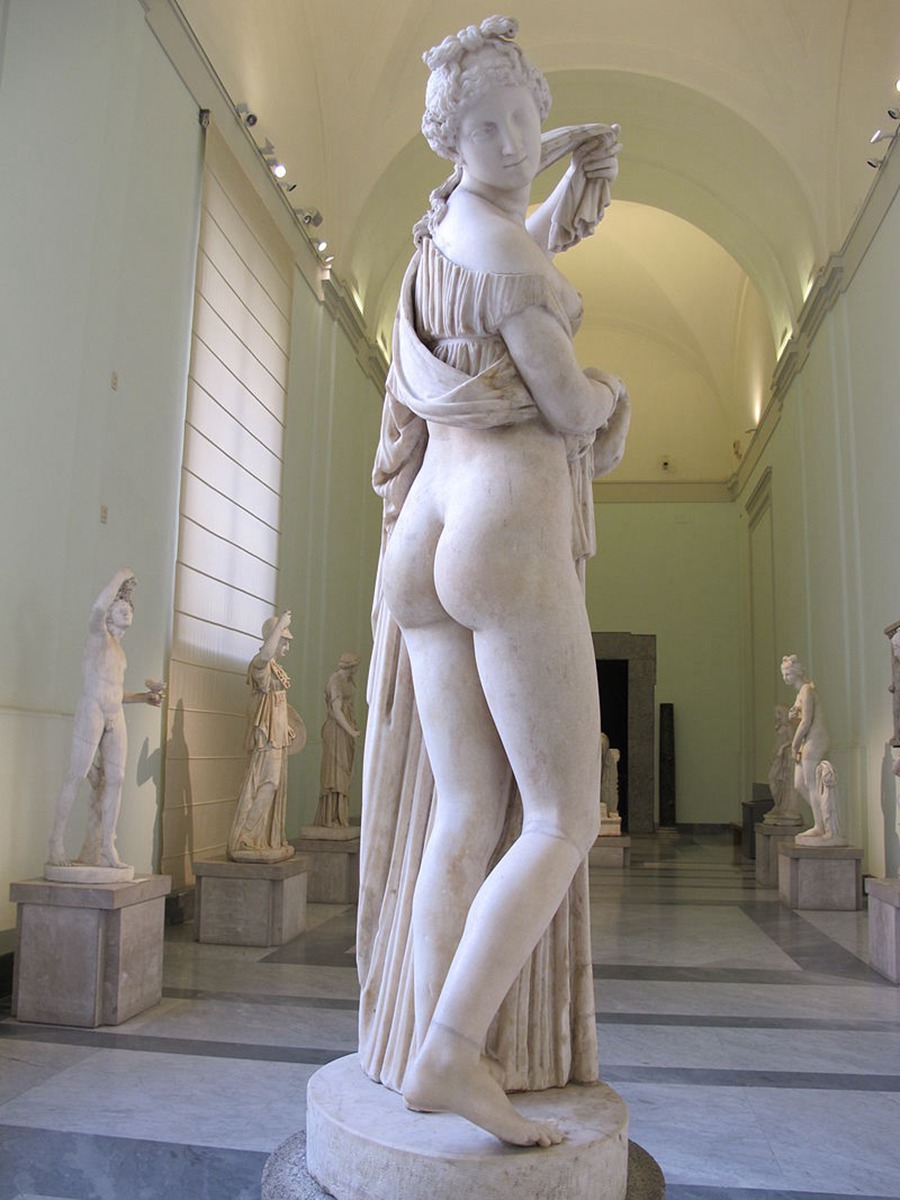
2.Aphrodite, Pan, and Eros, 100 BCE
This statue of Aphrodite, Pan, and Eros is 1.5 meters tall and dates to around 100 BC. Pan is the god of shepherds, wilderness and country music, and Eros is the god of love and sex, the son of Aphrodite and Ares. This is an interesting piece because the female is Aphrodite but she is holding a shoe in her right hand and the lustful Pan is obviously trying to seduce Aphrodite but Aphrodite seems to be resisting and using The shoe threatens him, and her son Eros also tries to stop Pan by separating them.
3.Townley Venus, 1st or 2nd century AD
The marble Venus of Townley is a 2.14 m (7 ft) tall sculpture of the Roman goddess Venus, based on a Greek original from the 4th century BC, showing the goddess half-clothed and nude from the waist down. The posture of her arms would be reminiscent of the Venus of Capua or the Venus of Milo, and like them she may be holding a mirror.
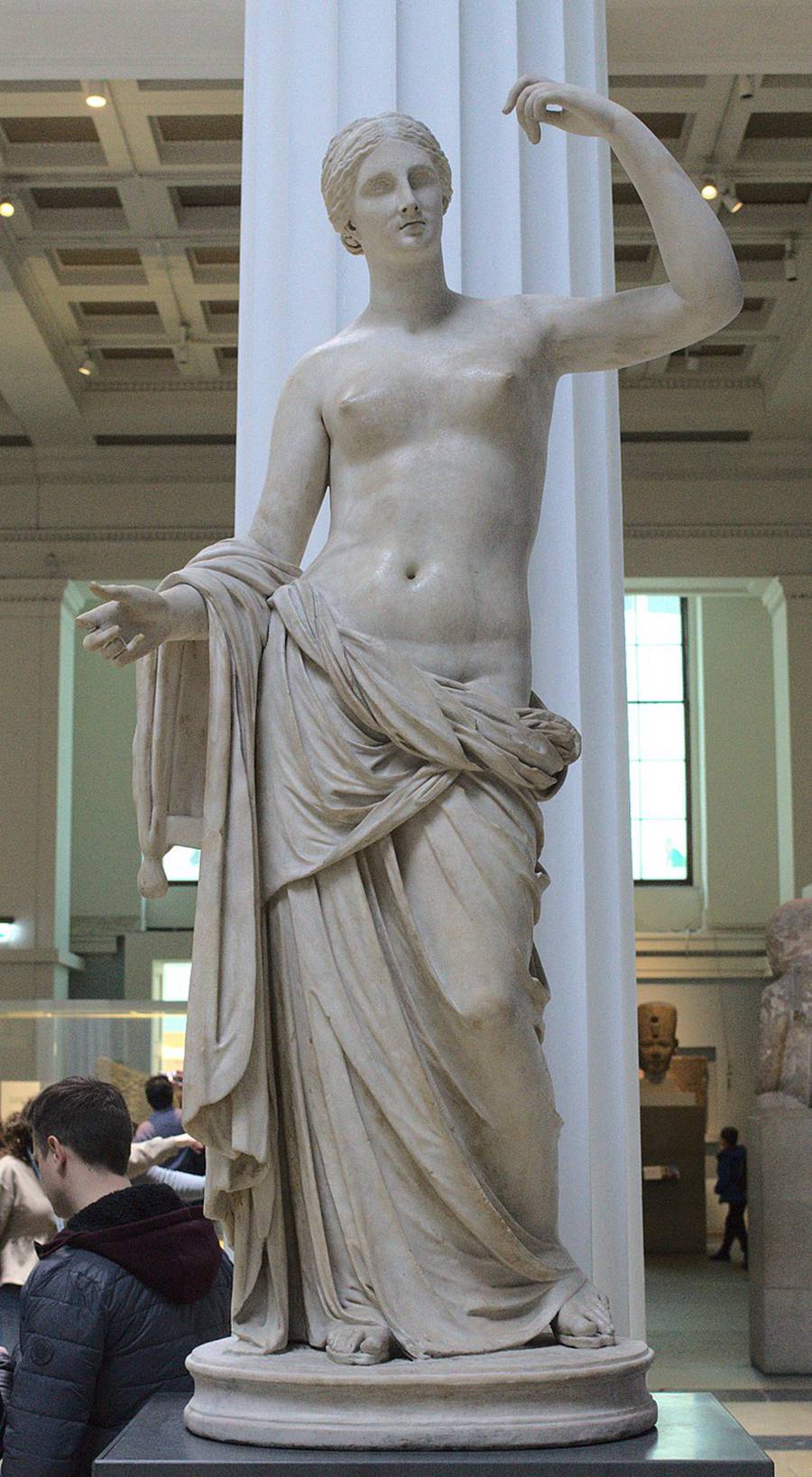
4.Vénus de Milo, Between 150 and 125 BC
The marble Venus de Milo is famous for its mysterious missing arms. This Venus statue fully complies with the golden ratio of human body beauty proportions. The ratio of the upper and lower parts of the well-proportioned human body is exactly 1:1.618. The beauty of Venus is that no matter from which angle you look at it, she conforms to the golden ratio of the human body, so she can transcend the times and become a symbol of women’s eternal beauty. Over the years, countless people have tried to help her “install” these two broken arms, trying to restore her perfection, but to this day, no one has succeeded. Venus still dominates the world with her incomplete beauty. Maybe she had to lose her arms in order to be graceful.
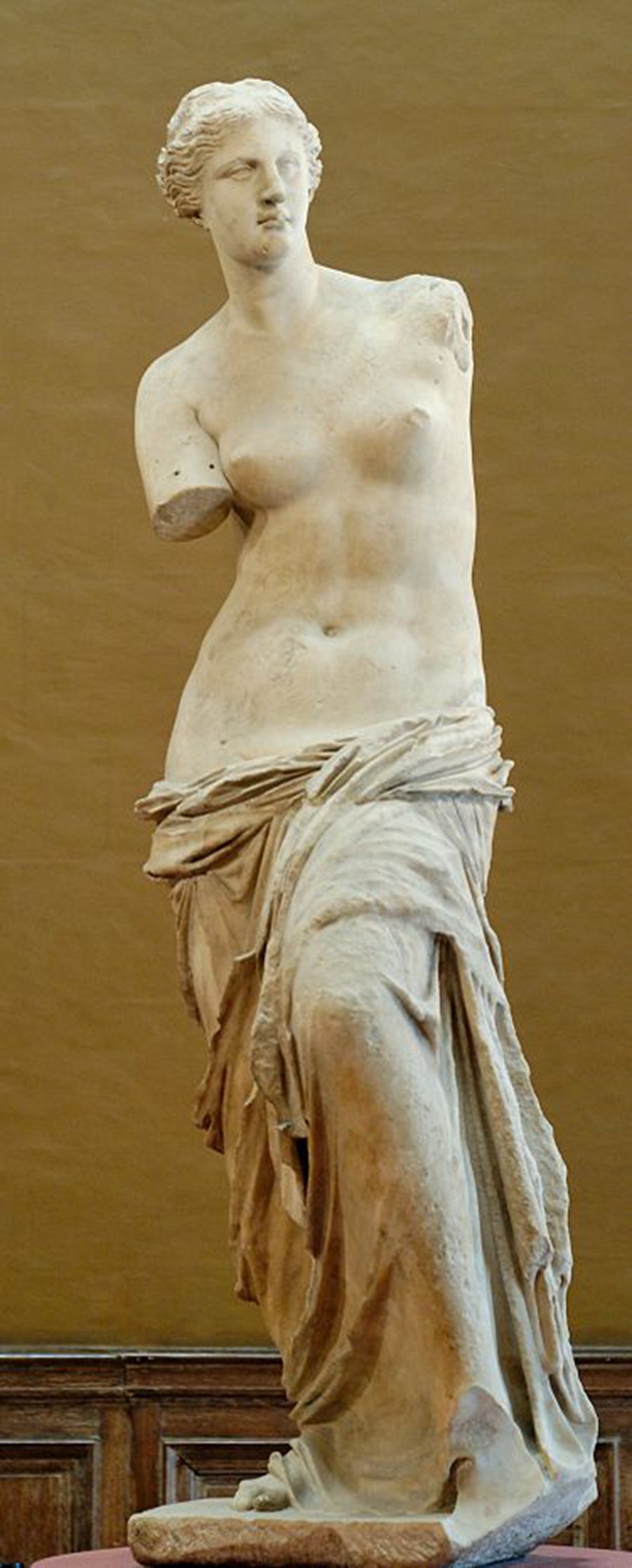
5.Statua di Afrodite Appoggiata, 2nd century
In the Statua di Afrodite Appoggiata, the goddess’s head is obscured with a hooded cloak covering her robe, a design that gives the sculpture a “rainy day” atmosphere and suggests that the prototype dates back to the 5th century BC. This reproduction from the Antonine period conforms to the Roman taste for classical beauty, but nonetheless captures the beauty of the goddess as she reclines on a column, her left elbow propped up and her left leg forward toward the viewer.
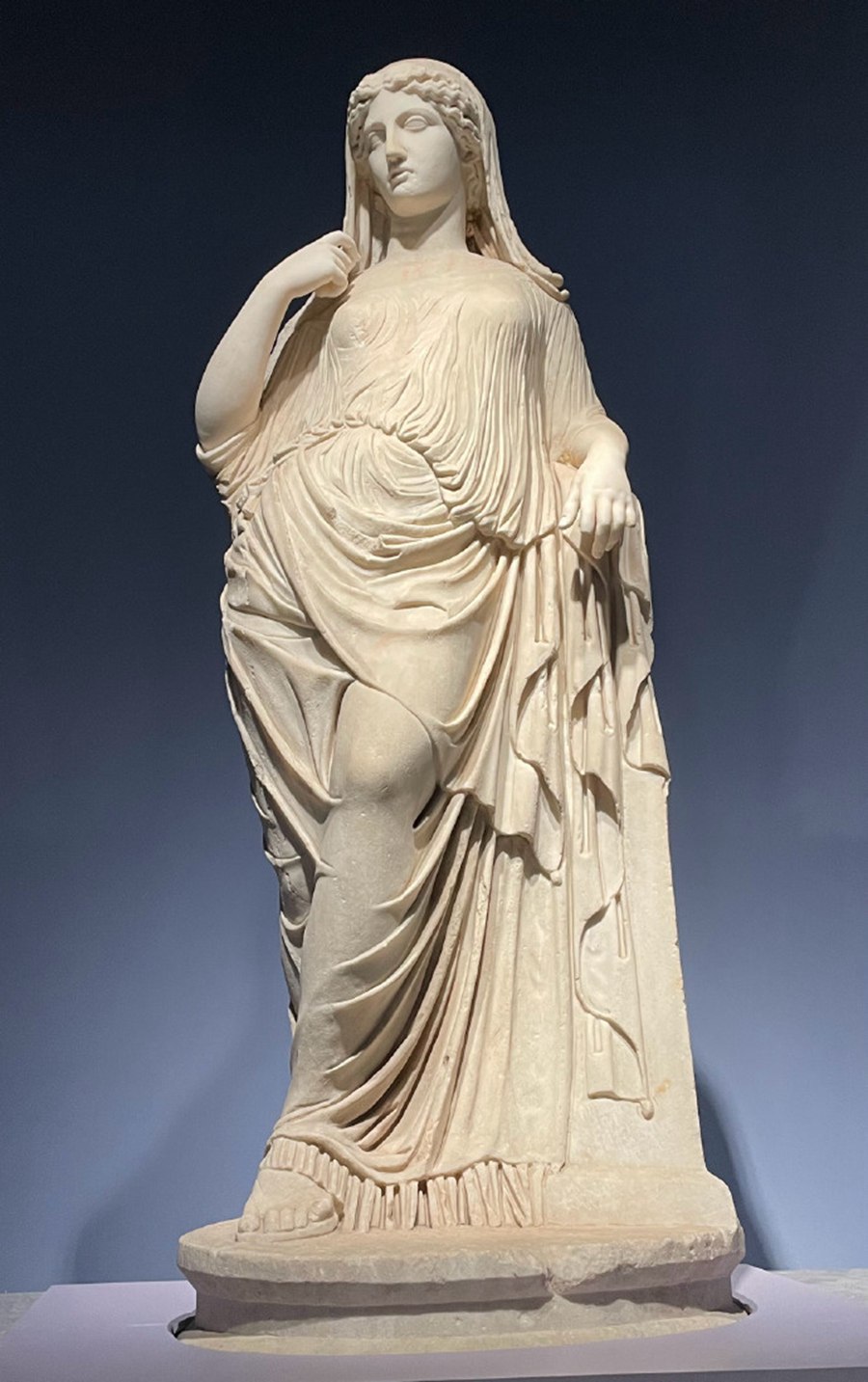
6.Lely Venus, 200 BC
The Lely Venus is a marble statue of the Crouching Venus type, a copy of the Hellenistic original by Doidalses, dating from the Antonine period. The sculpture shows a goddess who seemed to be taking a bath and was surprised to find someone peeping. She instinctively squatted down, bent her right arm in front of her body, and rested her left arm on her left leg. With this expressive posture, she tried to cover up. important parts of the body. The hair is loosely knotted on the head, part of it is scattered over the left shoulder, and the head is twisted to the right.
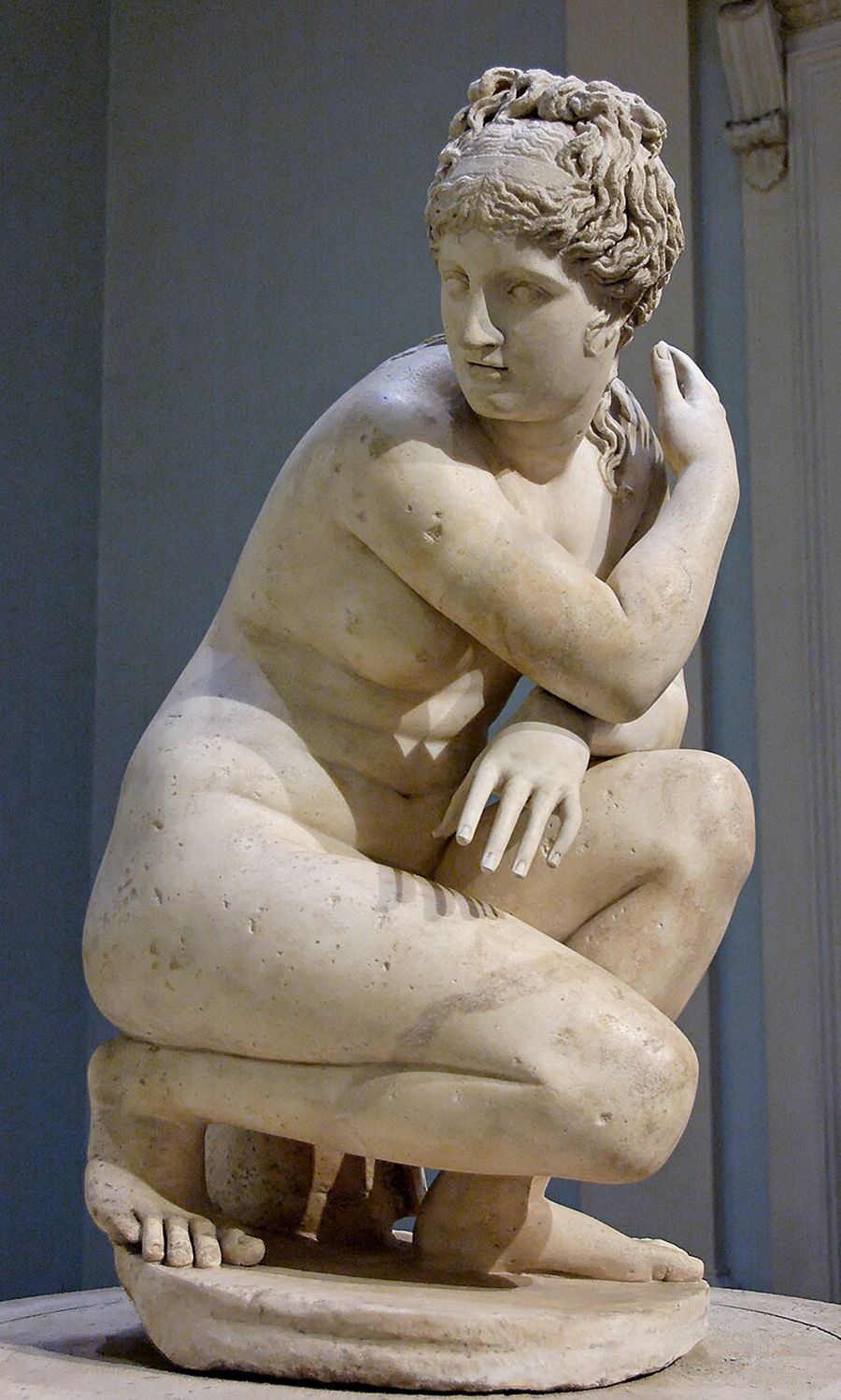
7.Aphrodite of Knidos, 4th century BC
Aphrodite of Cnidos is a sculpture of the ancient Greek goddess Aphrodite, created by Praxiteles of Athens in the 4th century BC. This Cnidos Venus reproduces the moment when the goddess takes a bath, her passionate and gentle character, healthy, plump and graceful figure, a charming smile on her slightly opened red lips, her eyes staring, twinkling with crystal and tenderness. The joyful eyes make people feel distracted.
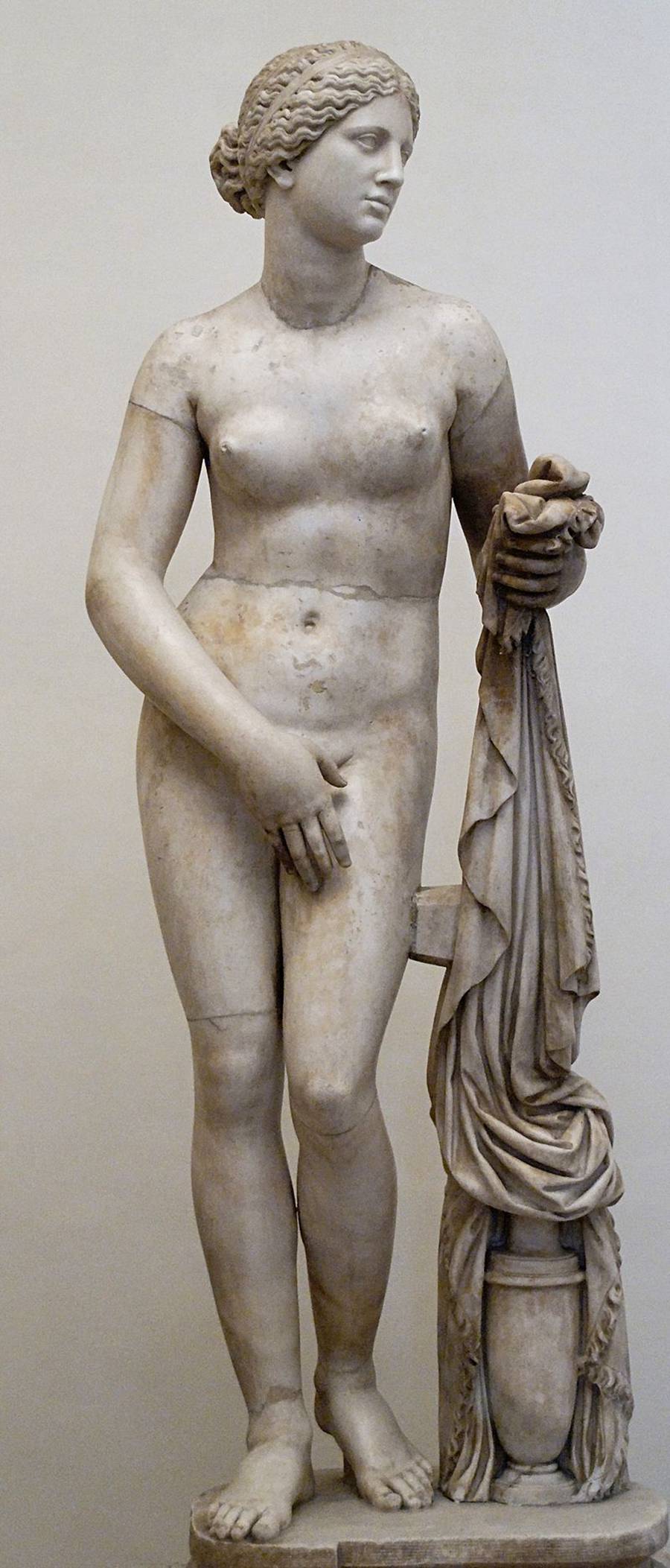
8.Capitoline Venus, 4th century BC
Slightly larger than life-size, this marble sculpture represents Venus-Aphrodite nude and emerging from a bathtub to contemplate. The image of Venus as the voluptuous goddess of love is not so obvious in this statue: in Roman times, female figures did not show off their bodies as they did in ancient Greek times. In order to show respect, this Venus covers her body somewhat “coyly”. Although not as attractive as the naked body of the Venus of Milos, the covered Venus is still full of beauty. Not only that, through her hands, arms and head slightly tilted to one side, she also conveys a round and rich beauty, while her neat hair and face that seems lost in thinking represent the characteristics of the Roman period: rationality. and thoughts.
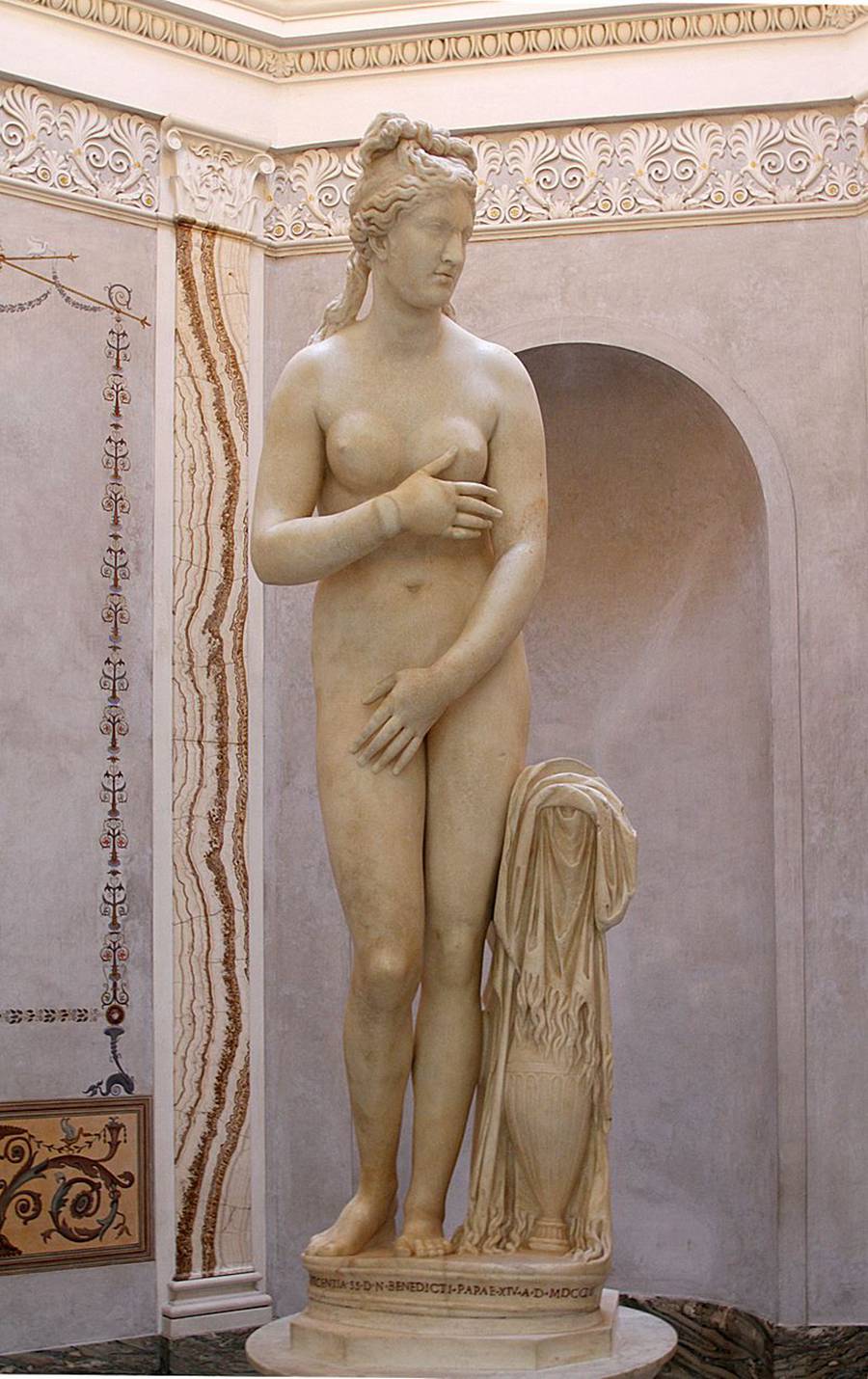
9.Aphrodite of Menophantos, 1st century BCE
Aphrodite of Menophantos is a marble statue of the Roman goddess Venus in a classic pose in Western art. The statue depicts a naked woman, her left hand covering her private parts with a piece of cloth, while her right hand covers her breasts. The goddess stands on her left leg, with her right leg slightly tilted. Her tilted head and nonchalant expression suggested she was deep in thought.
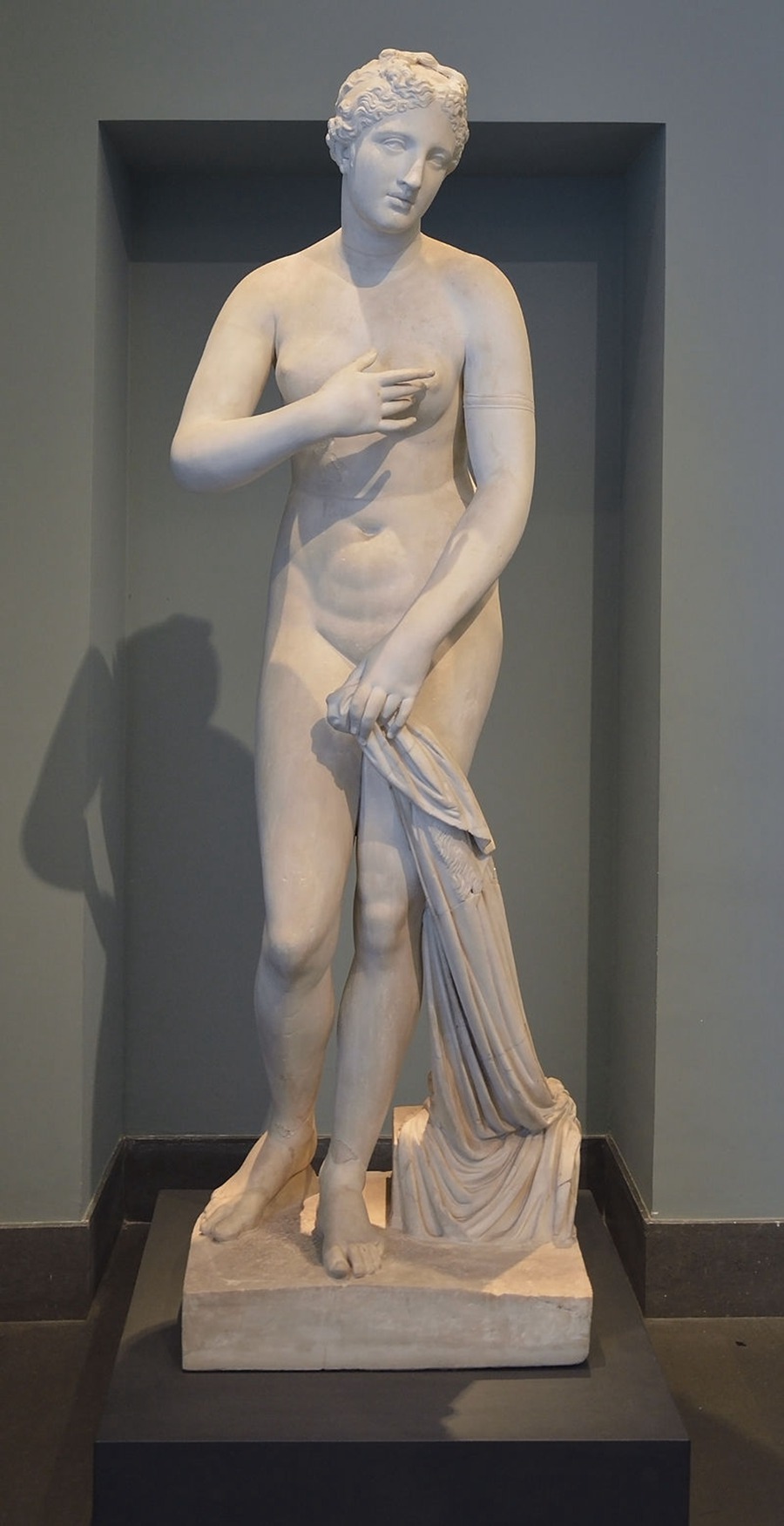
Finally, if you are a lover of Venus statues or famous marble statues and want to collect a marble replica, then YouFine is an excellent choice. As a professional carving factory with 40 years of experience, YouFine cooperates with experienced professional artists who can restore 99% of the details for you, and can customize it according to the needs of different customers. Please feel free to contact YouFine for more information.
